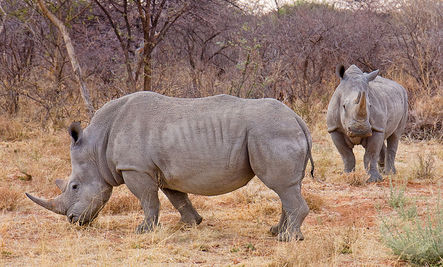President of the American College of Traditional Chinese Medicine (ACTCM) and President of Council of Colleges of Acupuncture and Oriental Medicine (CCAOM) Lixin Huang has publicly said that rhino horn is no longer approved for use in traditional chinese medicine. She also said the principle of balance is important both in traditional chinese medicine and in ecology, meaning that TCM does not approve of damaging or destroying the natural balance existing in ecological systems. The use of rhino horn is a misinterpretation of TCM and is disrespectful to it, she also explained.
Rhino horn does not have any medicinal value because it consists almost entirely of keratin, which is the same protein found in human fingernails, hair and toenails. Eating fingernails and hair does not cure any ailments, and neither does ingesting rhino horn. Rhinos populations have been driven down to dangerously low levels, mainly because of demand created by very outdated, silly superstitions regarding their horns. There seems to be no limit on how ridiculous human beliefs can be, and yet in this case they are closely tied to very destructive, even murderous behaviour.
There is another animal with a single horn with magical powers – the unicorn! Most people today probably laugh when unicorns are mentioned, but some still hold ridiculous beliefs about rhino horns.
A fashion model claimed taking rhino horn pills could reduce the effects of aging, but clearly no one seeks out the opinions of fashion models for medical or health advice. In response to her comment, the Founder and President Wildlife Foundation Cranleigh, Surrey said, “I read with horror the interview in which [Elle] Macpherson endorses the use of powdered rhino horn. In Africa in the 1970s and 1980s, more than 96 percent of the world’s black rhino were slaughtered for their horn and are now critically endangered.” (Source: The Sunday Times)
This year has been especially hard for rhinos in South Africa, with increasing numbers being lost to poachers. An estimated 287 have been killed so far this year. The rhino killers are equipped with modern technology and very well organized.
Adapted from an article by Jake R.





